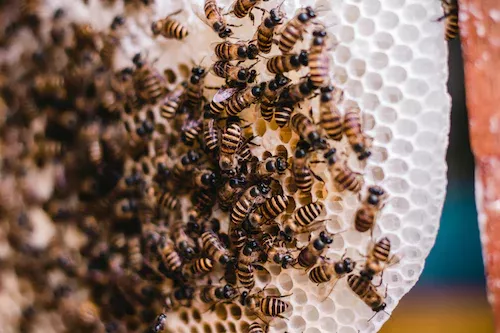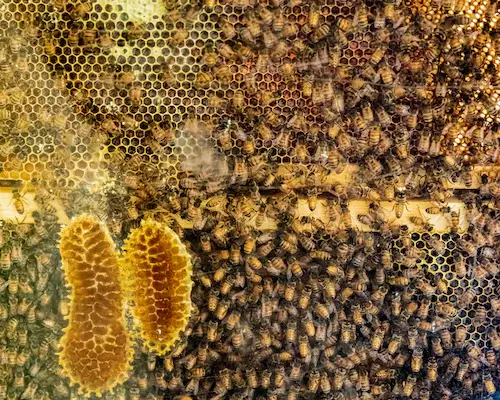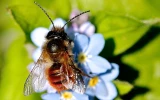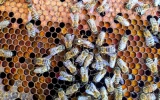7 Solutions to Colony Collapse Disorder That'll Actually Work
Colony Collapse Disorder (CCD) is a serious issue facing the bee population. Here are seven realistic solutions to CCD that will help protect bee populations and support beekeepers. These solutions range from practical beekeeping techniques to political action.
Improving bee nutrition with pollen substitutes, reducing pesticide exposure through integrated pest management, using bee-friendly farming practices such as crop rotation and no-till, and protecting wild bee populations through habitat conservation are some of the solutions to Colony Collapse Disorder.
Even though the cause of Colony Collapse Disorder is still unknown, there are many solutions to it. Learn about the solutions to Colony Collapse Disorder that work, and find out how to protect bee populations and help save the planet.
Summary
- There are strategies for Colony Collapse Disorder, despite the fact that its cause is still unclear.
- Improving bee nutrition through pollen substitutes and feed supplements is one of the solutions to CCD.
- Providing and conserving the bees' habitats are ways for the bees to prevent CCD.

Solutions to Colony Collapse Disorder
Here are the simple solutions that you can do to lessen the chances and prevent your bees from having Colony Collapse Disorder.
1. Improve bee nutrition
One possible solution to CCD is to focus on improving bee nutrition. This can be done by providing pollen substitutes and feed supplements to supplement the bees’ natural diet. Pollen substitutes are typically made from a mixture of proteins, carbohydrates, and other nutrients. These can be supplemented with vitamins, minerals, and other nutrients to ensure that the bees have a balanced diet.
Feed supplements, such as sugar syrup and other sources of carbohydrates, can also be used to provide the bees with additional energy. By providing bees with a more balanced diet, beekeepers can help reduce the risk of CCD. This can be done by ensuring that the bees have access to ample sources of pollen and other nutrients, as well as providing them with supplemental food sources.
2. Reduce pesticide exposure
One potential cause of CCD is pesticide exposure, as bees can be exposed to a range of pesticides used in agricultural and residential settings. To reduce the risk of CCD due to pesticide exposure, it is important to practice Integrated Pest Management (IPM) as a solution.
IPM is an effective method to reduce pesticide exposure, as it utilizes a variety of strategies to control pests while also taking the environment into account. Strategies used in IPM include cultural practices such as crop rotation, sanitation, and monitoring to identify pest activity; physical methods such as trapping and exclusion; and biological methods such as introducing beneficial insects that can help control pests.

In addition, when necessary, IPM also includes the use of pest-specific pesticides that are applied most selectively and effectively. The use of IPM is beneficial in reducing pesticide exposure, as it encourages the use of more targeted and selective methods that pose less of a risk to honey bees and other beneficial insects.
3. Use bee-friendly farming practices
Bee-friendly farming practices are a major part of the solution to Colony Collapse Disorder (CCD). Using bee-friendly farming practices, such as crop rotation and no-till, can help reduce the impact of these factors on bee health and help prevent CCD.
By rotating crops, farmers can avoid planting the same crop in the same field year after year, thereby reducing the chances of pests and diseases building up in the soil. No-till farming practices help preserve the soil structure, which can further reduce the impact of pests and diseases on bee health.
In addition, these practices can help protect and improve the environment in other ways. Crop rotation helps maintain soil fertility, and no-till reduces soil erosion and increases water retention. Both practices can also reduce the number of pesticides and herbicides used on a farm, which is beneficial for both bee and human health.
4. Plant bee-friendly plants
By planting bee-friendly plants in our gardens and green spaces, we can provide essential nectar and pollen to bees, helping to mitigate the effects of CCD. When selecting bee-friendly plants, it’s important to look for plants that are easy to grow, bloom at different times of the year, and provide a good source of nectar and pollen.
Some great options include clover, lavender, wildflowers, and various herbs. These plants provide a variety of colors, shapes, and sizes for bees to forage on and can help create a vibrant and healthy environment for them to thrive in.
5. Provide habitat for bees
As bees are responsible for pollinating a third of the world’s food supply, it is essential to take measures to protect them and their habitats. Providing habitat for bees, such as nesting boxes and bee houses, is a great way to help bees thrive and reduce the risk of CCD.
Nesting boxes provide a safe environment for bees to nest and rear their young. These can be made from a variety of materials, such as wood, cardboard, and clay. It is important to choose a material that is durable and weatherproof, as well as one that is not treated with any chemicals. It is also important to make sure the nesting boxes are placed in a location that is sheltered from rain, wind, and direct sunlight.
Bee houses are an excellent way to provide shelter for wild bees. These houses offer a place for bees to nest and hibernate during the cold winter months. Bee houses are made from a variety of materials, such as wood, paper, and clay.
It is important to make sure the bee houses are placed in a location that is sheltered from rain, wind, and extreme temperatures. Additionally, bee houses should be placed in an area that is near a source of nectar and pollen, such as flowers, shrubs, and trees.

6. Protect wild bee populations
One of the most effective ways to combat CCD is through habitat conservation. Habitat conservation for wild bee populations is essential for their health and survival. These species require a variety of habitats, including open meadows, wetlands, forests, and deserts, to find and collect food, build nests, and reproduce.
By conserving these habitats, we are helping to protect the wild bee populations that are so important to global food security. Conservation efforts can include creating or restoring bee-friendly habitats, such as by providing nesting sites, planting native flowers and trees, and reducing or eliminating pesticide use. These conservation efforts can be implemented by individuals, communities, and governments and can be done on a large or small scale.
7. Monitor bee health and disease
To help prevent CCD, beekeepers must monitor bee health and disease through regular testing and monitoring. This includes testing for parasites and diseases, monitoring bee nutrition, and assessing environmental conditions.
Testing for parasites and diseases is important because it allows beekeepers to quickly identify and treat any issues that could be causing CCD. Tests should be carried out every few months to ensure that all colonies are healthy.
Monitoring bee nutrition is also important, as bees require a variety of nutrients to maintain good health. Beekeepers should monitor the quality of the nectar and pollen that the bees are collecting, as well as the amount of protein, carbohydrates, and fat that the bees are consuming.
What Exactly is Colony Collapse Disorder
Colony Collapse Disorder (CCD) is a serious problem facing beekeepers and bee populations around the world. CCD is characterized by the sudden disappearance of adult bee colonies, leaving behind only a few young bees and a queen. The exact cause of CCD is still unknown, but it is believed to be caused by a combination of factors such as parasites, viruses, and poor nutrition.
Colony Collapse Disorder (CCD) is a devastating phenomenon that has been on the rise in recent years, resulting in the rapid decline of bee populations around the world. As bees are essential pollinators for many of our crops and wild plants, this poses a major threat to our food supply and the health of our ecosystems. Fortunately, there is something we can do to help.



